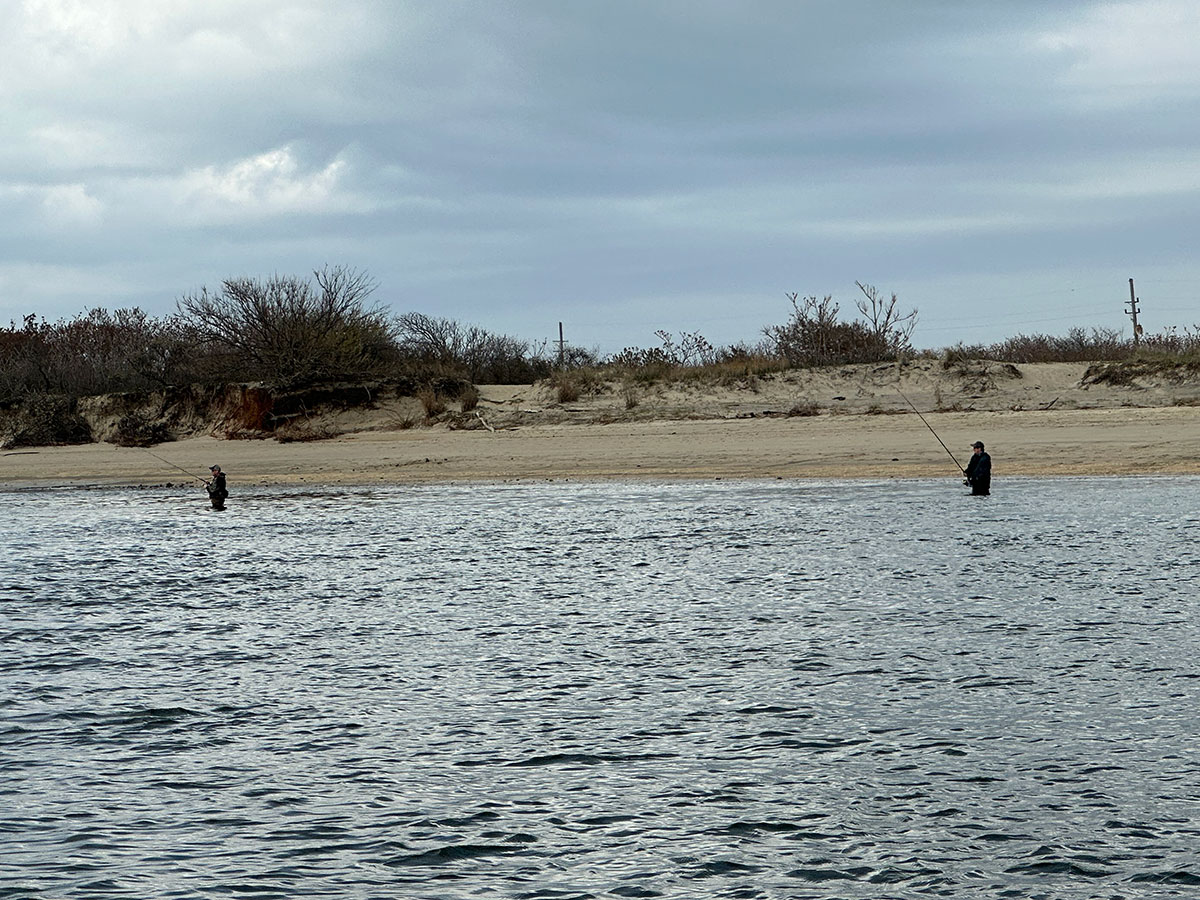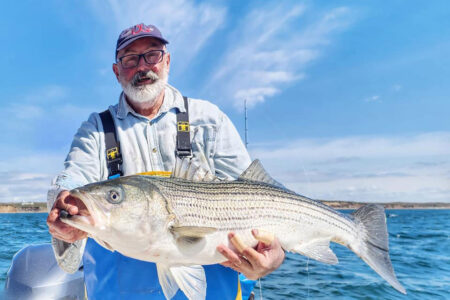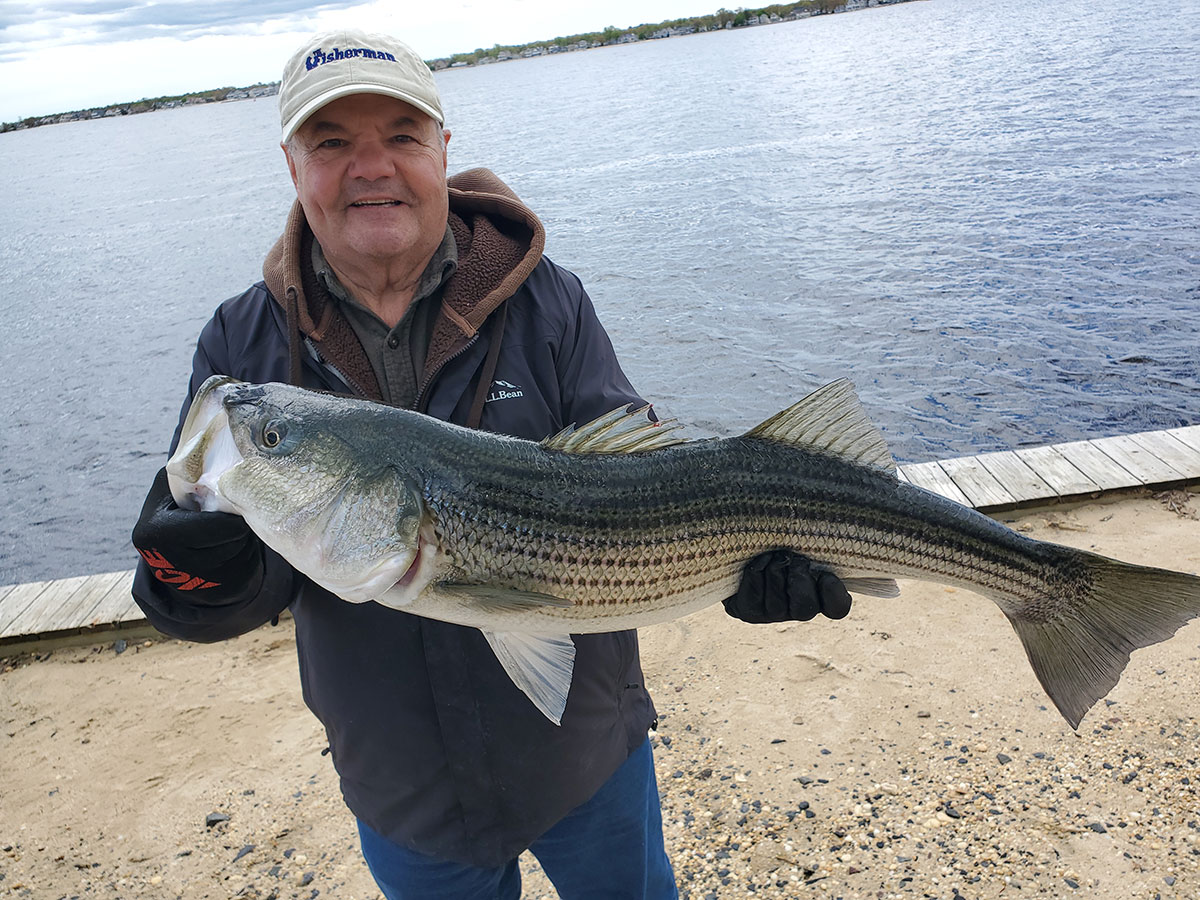
Striped bass season is underway on March 1, and the early birds get the worms.
Early striper season for the back bay, tidal rivers and estuaries traditionally starts March 1; the two-month hiatus of no targeting measures in January and February in the Garden State is met with as much excitement by striper fisherman as opening day of trout season for freshwater anglers.
There are two factors that play a big part in striper activity along the intercoastal shorelines and bay areas during the early part of spring – winter weather and water temperatures. A mild winter tends to help with better fishing conditions in the early spring. As the month of March moves forward, the stripers become active coming out of their dormant winter state. This is related to warmer water temperatures (45 to 55 degrees) and more bait activity. The back bay and rivers water levels are shallow in many areas, 10 to 20 feet, which of course warm up sooner than the ocean.
| CIRCLE IT UP |
| In addition to the one striper bag and 28- to 31-inch size limit, anglers are required to use non-offset (inline) circle hooks when fishing for striped bass with bait in all waters. According to the New Jersey Division of Fish & Wildlife bait is defined as “any marine or aquatic organism live or dead, whole or parts thereof. This shall not apply to any artificial lure with bait attached.” |
One notable back bay bait event to keep an eye on that happens every year is the cinderworm hatch, which depending on the area typically occurs in April; it’s brought on by moon phase from the full moon through to the new moon. The hatch is dependent on the temperature of the sediment and water column. Warmer shallower water stimulates cinderworm emergence, a natural bait to get the stripers biting.
The large striped bass, the cows that winter offshore move in from the ocean to spawn while chasing herring and menhaden, will usually make their way into brackish and fresh waters to spawn in April and May. During this time the chances are great of catching a striper which exhibits a bulging belly meaning it’s carrying roe. Smaller stripers may have roe but do not exhibit a bulging belly. It isn’t illegal to keep a spawning striper if it falls between the 28- and 31-inch limit, but conservation-minded anglers should consider releasing these fish back to the water. If you take a picture of it do not hang it from its lips but cradle it and return it to the water quickly. Future generations are dependent on the spawning season and releasing those cows is meaningful to keep the striper population growing.
Typically, between May and June the stripers start to make their way out of the spawning grounds and to the ocean chasing bait to make their run north for the summer. The ocean water temperatures are now in the 60-degree range. The timing of this northern run is somewhat unpredictable, but the water temperature is a good indicator.
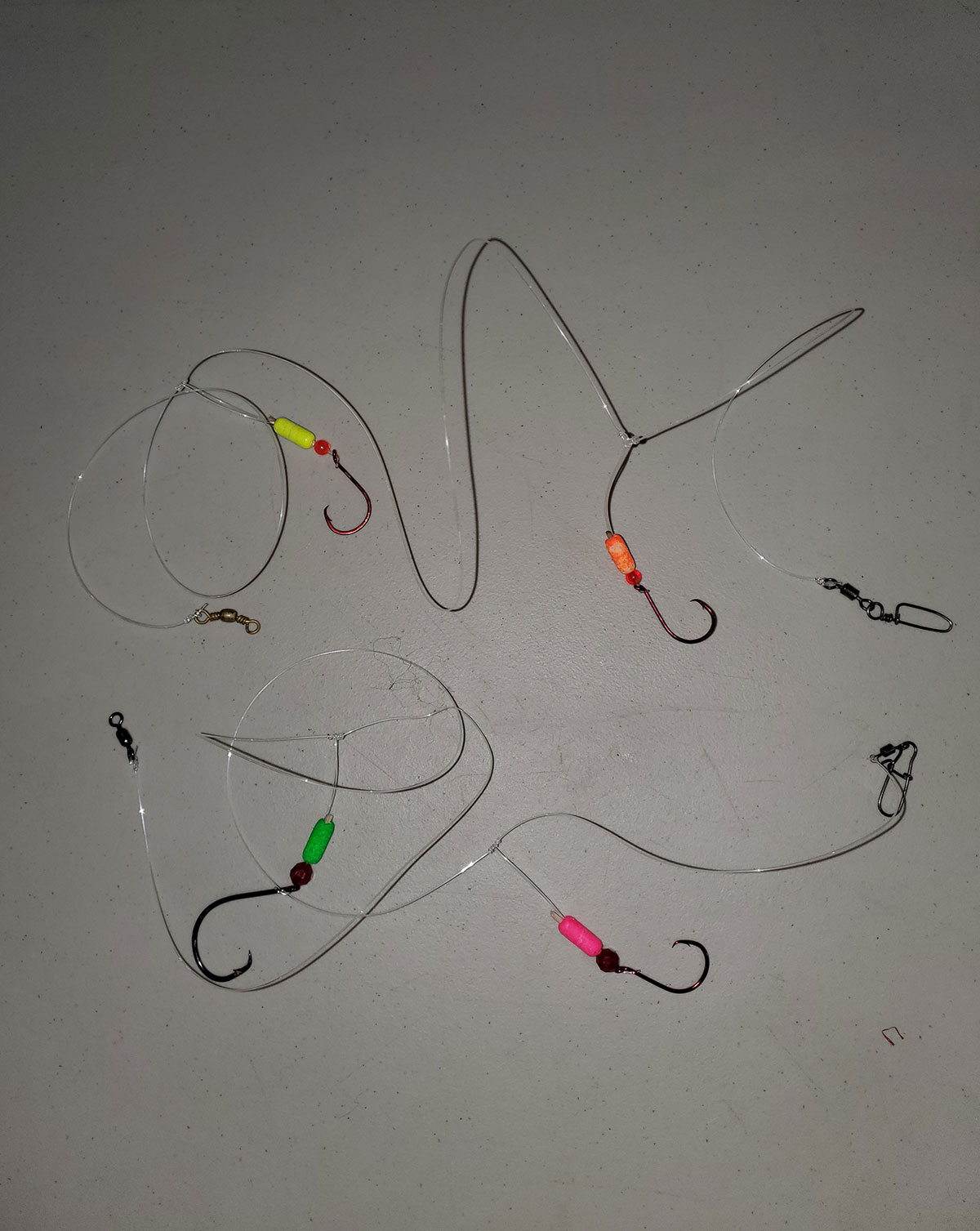
March Madness
Back bay, rivers and estuaries are skinny water, 10 to 20-foot in depth, and they will get warmer sooner than the ocean providing your first solid (and legal) opportunity to catch striped bass. My bait of choice – that of many March fishermen – is bloodworms. Clam or bunker chunks just don’t seem to work as well as bloodworms in this early season, though that really depends on the area you are fishing. For example, those fishing the Delaware for shad during the shad run will inadvertently catch stripers. Therefore you want to match the hatch. Artificial lures like paddletails and soft plastics by Tsunami or NLBN, perhaps small Rapalas or SP Minnows and others start to become more effective as the larger bait makes its way into the fishing areas. This is usually the case as we head into April.
My preference is bloodworms on a hi-lo rig with size 3/0 inline circle hooks. Most bait shops sell a perch rig with small floats at the hook, and this works well. The smaller hook is ideal for stringing on a bloodworm. Another favorite rig setup is making a bait ball hi-lo rig. Mimicking the perch rig but use a 7/0 inline circle hook as the top hook and the size 3/0 inline circle hooks as the bottom hook. Note the bottom hook is about 12 inches from the sinker.
How to make a bait ball: On the top 7/0 circle hook, attach two or three sandworms by only hooking them through the head then lay them over the hook shank folding over leaving the hook end exposed. Tie it down with elastic string as you would tie on a clam. Once secure now add a few bloodworms in the same manner as the sandworms. This should look like a ball of worms keeping the hook end exposed. Then add a small piece of bloodworm to the hook end. You can make this the night before and keep refrigerated overnight. On the bottom hook, just add a bloodworm prior to casting. I have caught many stripers with this setup.
Another version of this is to wrap the ball with mesh material to encapsulate the ball. This can be reused and just refrigerate and add worms as needed.
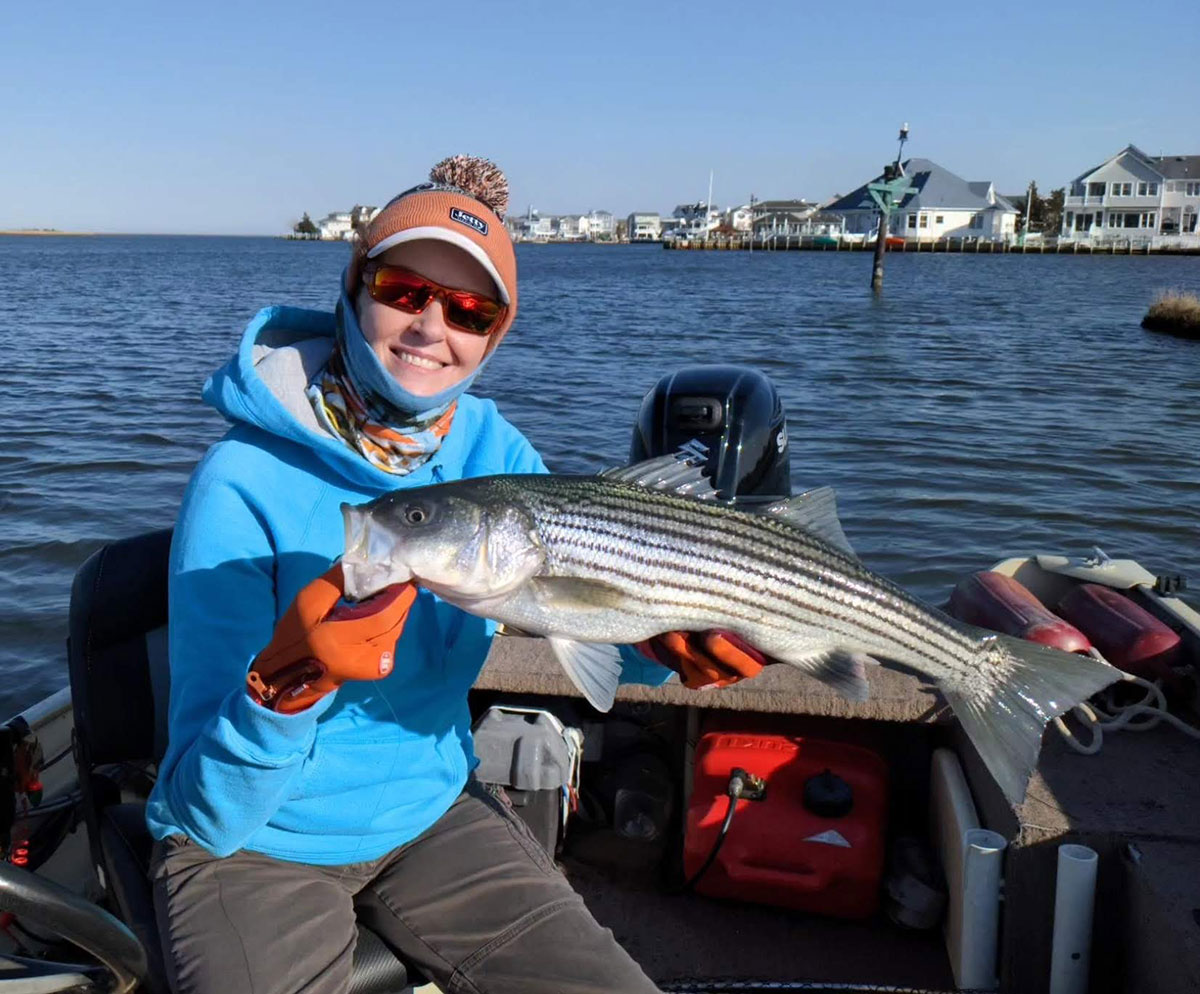
How & Where
The opportunity to hook into a 40-inch or larger striper is real, and you should not underestimate what rod and reel you use. A 7- to 9-foot rod, medium action along with a bait runner reel is a good choice. However, a non-bait runner spinning reel with 20- to 30-pound line is adequate. When using a standard spinning reel be sure you loosen the drag after casting, or you will be fishing your rod out of the water. When the stripers hit, they run and if the drag is not set properly, it will be pulled into the water.
You should have a heavy-duty net large enough to scoop up the striper if fishing from a bulkhead or pier. Be sure to have a ruler to measure the striper for legal size in your area carefully release all under and over size stripers.
Day or night I find the ideal time to fish is usually 2 hours before and after the tide changes. Stripers are more active during the evening hours but don’t count out daytime hours. As spring progresses, striper activity increases as the water temperatures increase past 45 degrees. The rougher the water caused by the wind and rain the more stimulated the striped bass may be, so don’t just be a fair-weather fisherman; put on your foul weather gear and get out there.
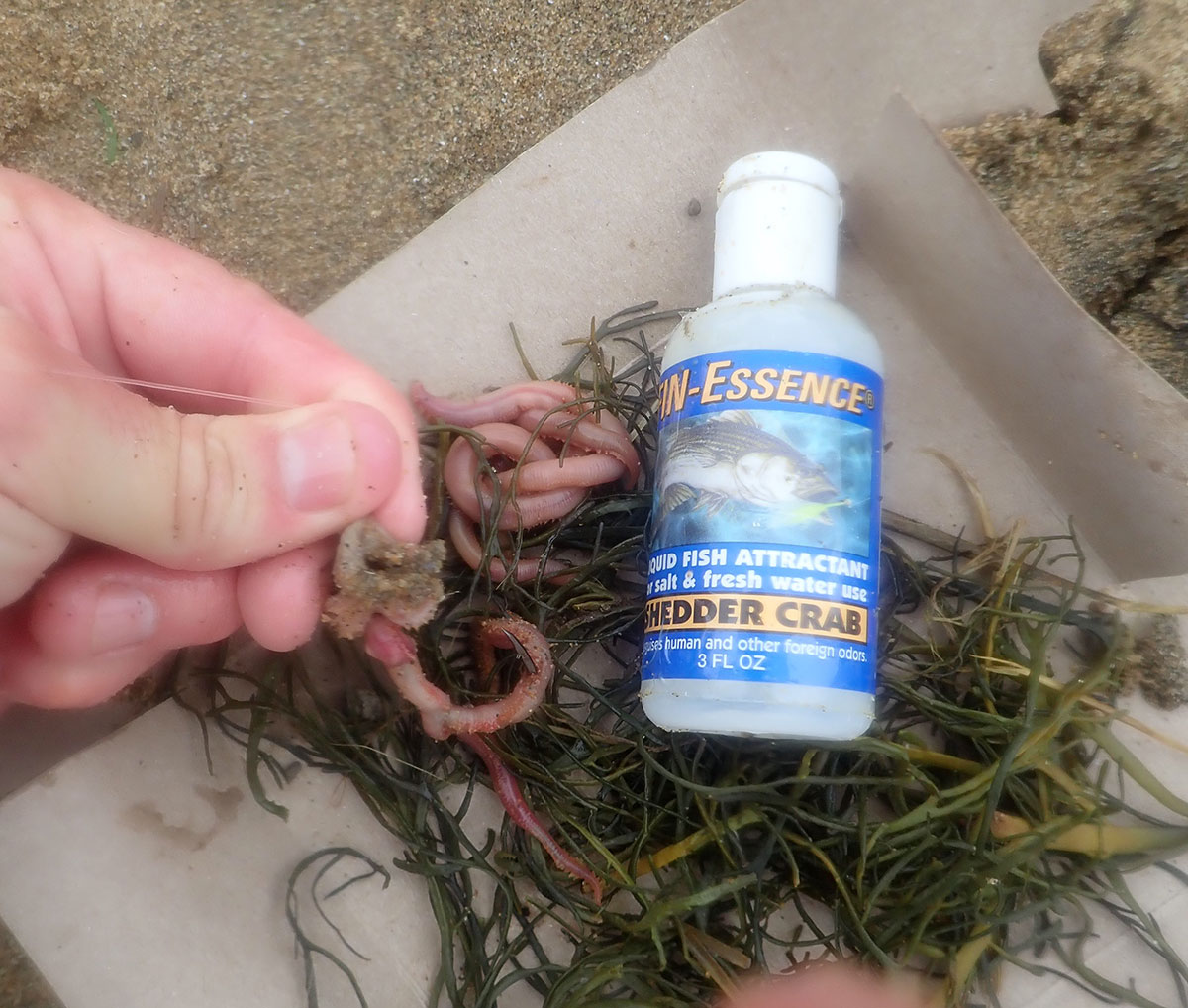
Typically stripers start to chase bait out to the open ocean on their way north in April and into May. Check local fishing reports for this activity and plan to hit the surf. Your choice of fishing bait or lures is wide open, but my choice later this spring is fresh clam on a hi-lo rig with inline circle hooks sizes 10/0 to 7/0. You can still use bloodworms but now clams or bunkers are better. If fishing with clams, you may have an opportunity to hook into black drum as well, especially below Barnegat; some of these fish can get quite large and they can offer a great fight.
I find the best time to catch stripers is the early spring striper season, which often boasts a longer period for catching fish. Once the fall striper run begins it presents opportunities, however depending on where you are in the New Jersey, Delaware Bay region it may only last a few weeks and may be somewhat unpredictable as you travel throughout the range.
Bottom line, you just have to put in the time and enjoy the challenge of catching a great gamefish along the shoreline, which as of March 1 means you’ll find me somewhere along a river bank soon enough.
